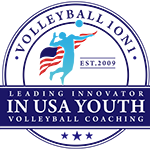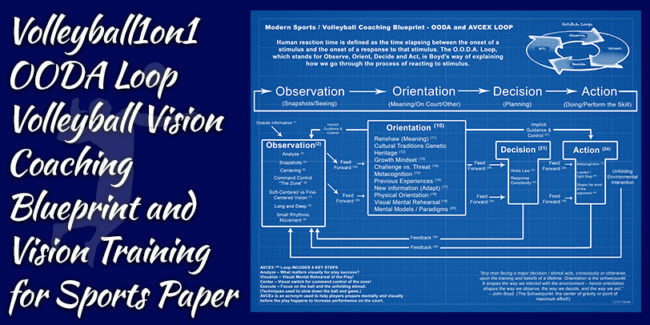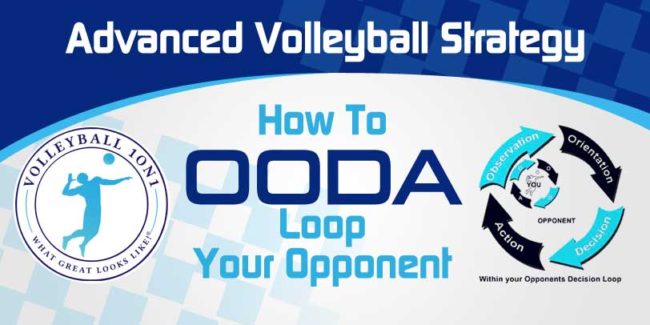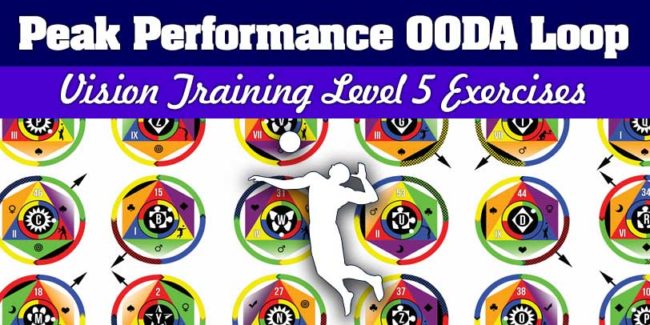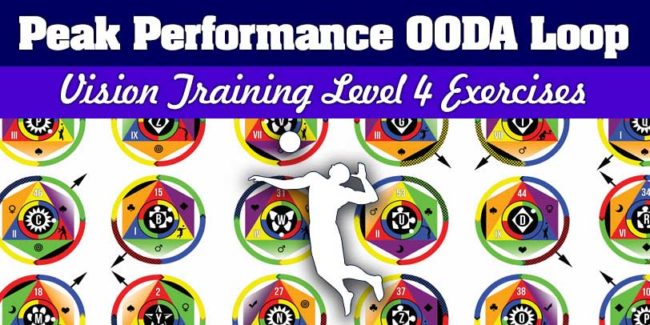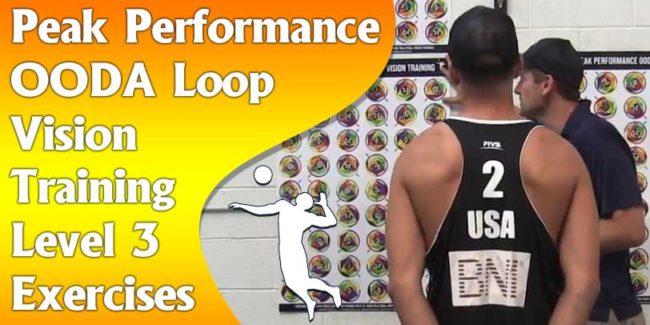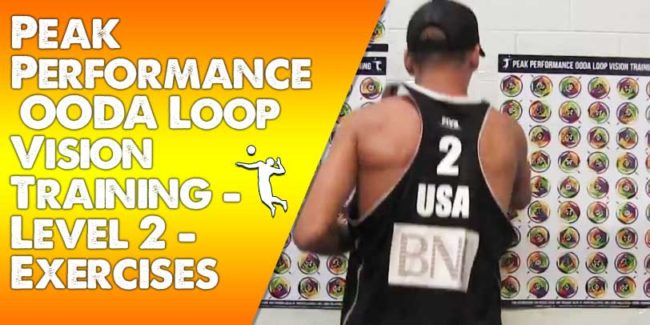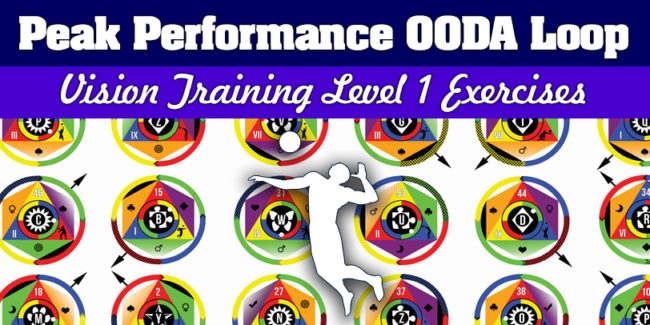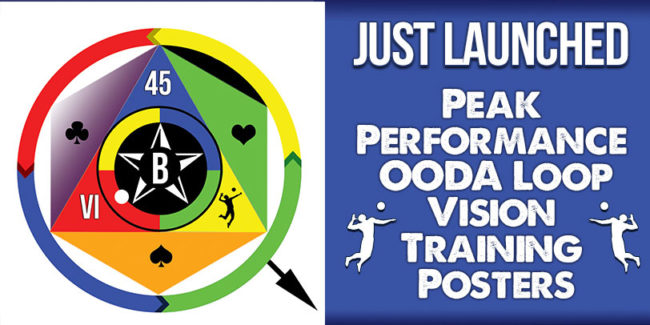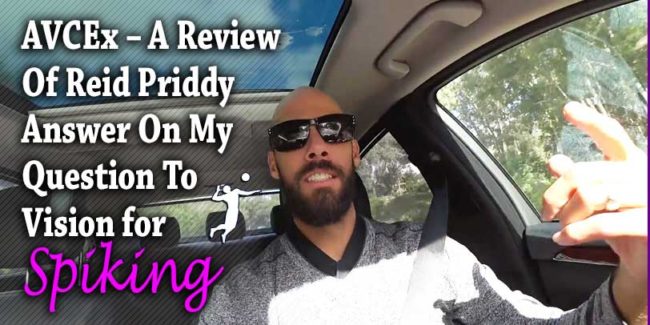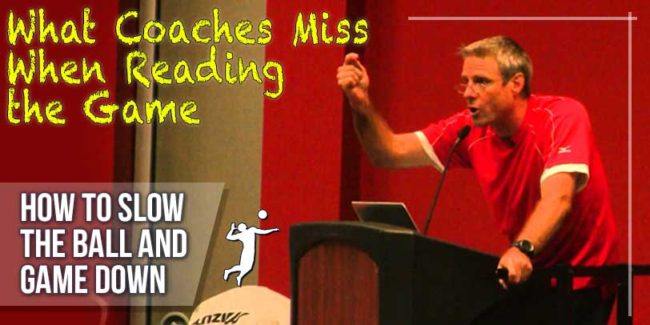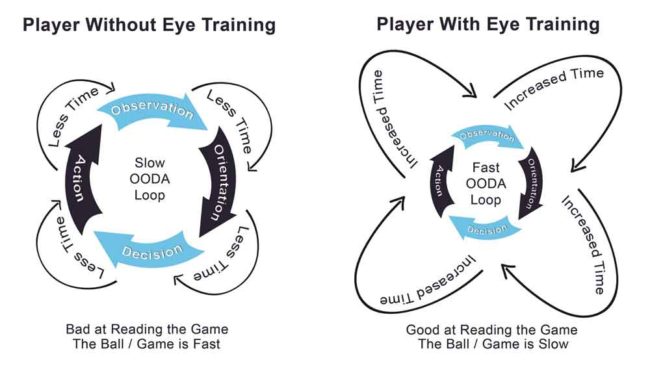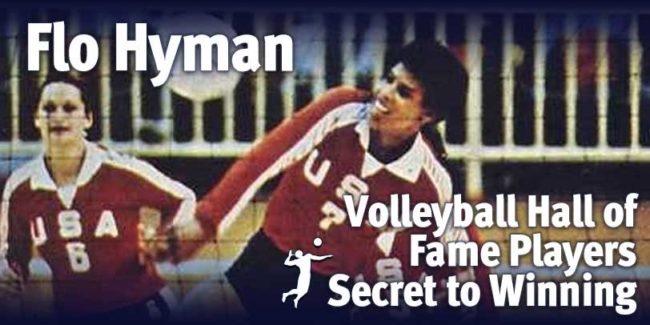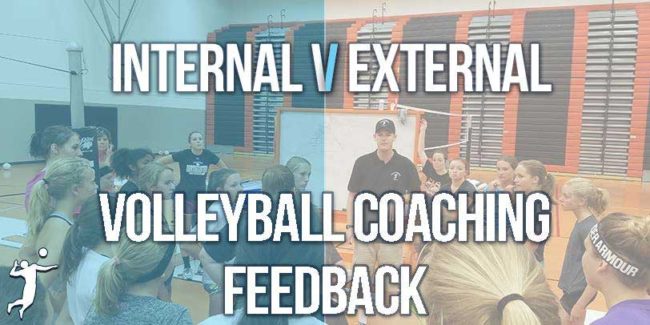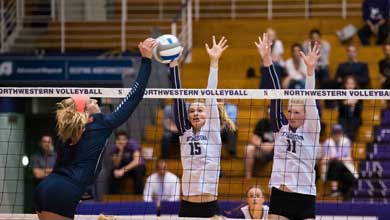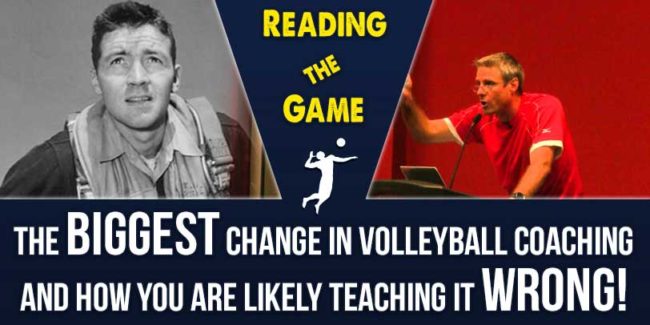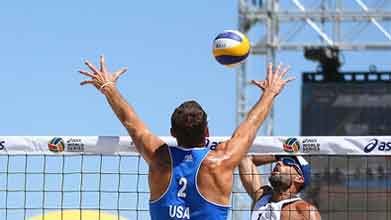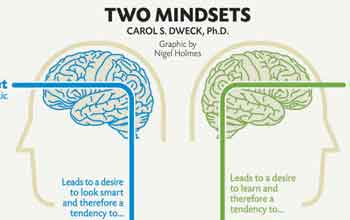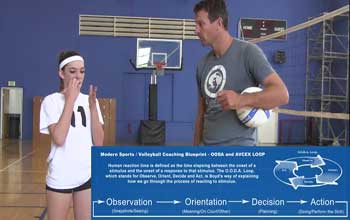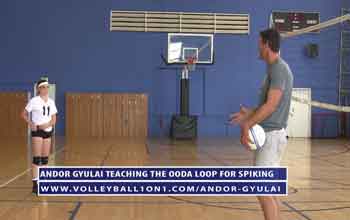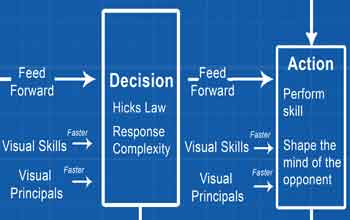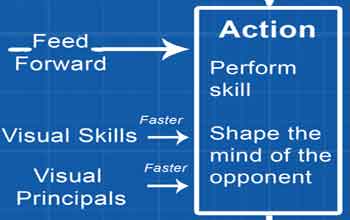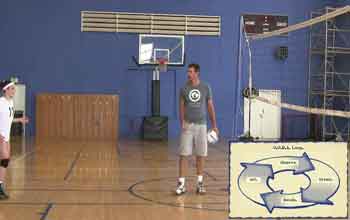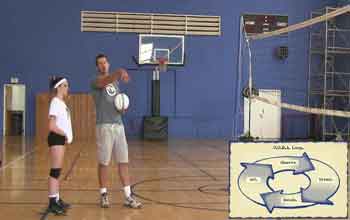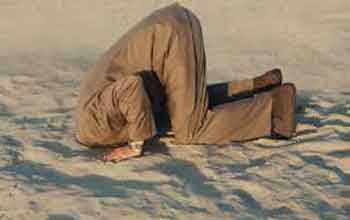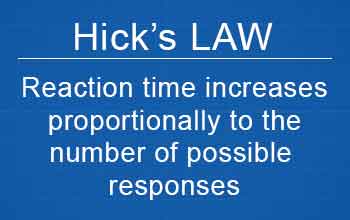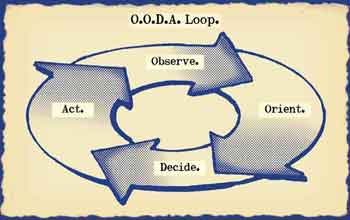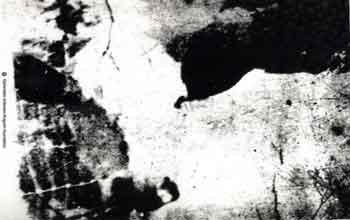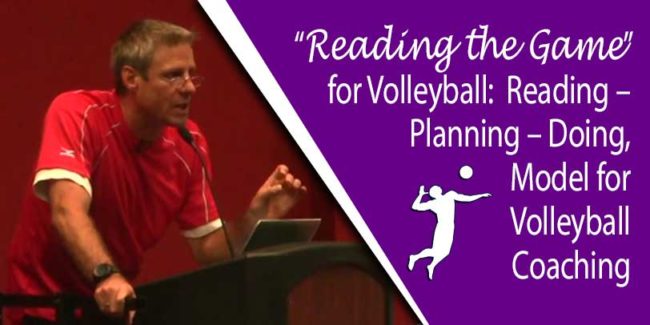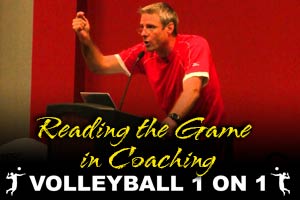OODA Loop / Volleyball Coaching Blueprint are Andor Gyulai ideas on how to coach volleyball better. The ideas build on Karch Kiraly ideas on “Reading the Game” forming a more comprehensive approach to coaching volleyball and viewing volleyball strategy.
Section 1 – Volleyball1on1 OODA Loop Vision Coaching Blueprint Introduction In the last 7 years the biggest change in coaching the sport of volleyball has been “Reading the Game.” Most coaches teach it wrong in our opinion and miss where they can help their players best. We have spent the last seven years researching and…
Beyond being used as a better tool for “Reading the Game” and teaching Volleyball Skills more effectively the OODA Loop is a powerful way for players and coaches to approach Volleyball Strategy.
Colonel John Boyd the military strategist who rewrote the book on modern air warfare and the man behind the OODA Loop believed that when at a disadvantage a competent pilot could still overcome that disadvantage by “Attacking the Mind” of his opponent.
There are roughly 640 muscles in the human body. Athletes spend an inordinate amount of time training and strengthening almost every single one of them. Yet there are six that are often forgotten: the Superior Oblique, Superior Rectus, Medial Rectus, Lateral Rectus, Inferior Rectus, and Inferior Oblique. Or, simply put: Your eyes. The aforementioned six…
Level 5 – Involves players “Observing,” “Orientating,” “Deciding,” and making an “Action” based upon information on one or more posters while watching and interacting with a separate moving object in constant motion while being actively distracted with the goal of moving the player out of their visual sensory mode. The purpose of level 5 exercises…
Level 4 – Involves players “Observing,” “Orientating,” “Deciding,” and making an “Action” based upon information on one or more posters while watching and interacting with a separate moving object in constant motion. The purpose of level 4 exercises are to help: Track a moving object, While scanning between 1, 2 or more posters, While performing…
Level 3 – Involves players “Observing,” “Orientating,” “Deciding,” and making an “Action” based upon information on one or more posters. Players are now ideally in constant motion. The purpose of level 3 exercises are to help: Improve “scanning for objects” while in motion. This is far more difficult than when stationary Improve players skill through…
Level 2 – Involves players “Observing” and “Orientating” information on one or more posters while in motion, meaning they are moving. The purpose of level 2 exercises are to help: To help continue to acclaimed athletes to the use of the OODA Loop posters Improve “scanning for objects” while in motion. This is far more…
Level 1 – Involves players “Observing” and “Orientating” information on one or more posters while being static, meaning not moving. The purpose of level 1 exercises are to help: Acclaimed athletes to the use of the OODA Loop posters Teach “scanning for objects” when training muscles in the eyes Teach players stage 1 – “Observation”…
We are excited to announce the launch of our Peak Performance OODA Loop Vision Training Posters. These 27″ x 39″ posters are ideal for helping athletes in all sports including volleyball improve their ability to process visual information and thereby speed up their ability to navigate the OODA Loop. Athletes who can more effectively move…
So this past week Reid Priddy (USA Volleyball Indoor Olympian Standout) did a Vlog (Video Blog) on a questions I asked him about vision. The question: “Do you have a vision routine for hitting?” His answer is here: This video is interesting on a number of fronts but most interesting as it relates to an…
This series of video is the result of over 3 years of personal research on “Reading the Game” and “How To Slow The Ball Down.” In the videos I review why Karch theories on Reading the Game are wrong in my opinion including why and how they can be dramatically improved! Many of these ideas…
A tale of two volleyball players, what defines a good player vs. a great player and how you can help your players become great? The sport of volleyball has undergone a wide variety of changes over the better part of the last decade: the scoring has changed, rules involving the net have changed, even the…
Flo Hyman used to be self-conscious about her height. Standing 6 feet tall before she was even a teenager, Hyman did everything in her power to shrink. And yet, more than half a century later, her name still towers in the world of volleyball. A three-time All-American and 1984 silver medalist, Hyman was named by…
“Research increasingly supports the view that external focus affects motor learning by directing the attention to the outcomes of movements instead of the movements themselves.The goal is to make actions more automatic and reduce conscious control;” As coaches, we can all relate to the same, maddening question: Why won’t our athletes listen? Over and over…
Billions of dollars have been spent since the 50’s on research related to the OODA Loop and military warfare. Many of those same, researched concepts can be applied volleyball. In this diagram we show you how many of our ideas on “Reading the Game” and “Volleyball Strategy” come together in one philosophy and diagram.
One important area that is not empathized enough on defense is the physical orientation of the set and players getting meaning from the set as it relates to defense both blocking and digging. To help overcome this challenge I have created a fun acronym, “I.T.S.S.” to help players understand this is the first thing they should look for when “reading the game” on defense.
In reviewing volleyball coaching as a whole “Reading the Game” is the biggest change in volleyball coaching in the last 5 years. In review “Reading the Game” is the skill I most often hear high school and club coaches struggle to teach and are most interested in learning. Yet the majority of experts are teaching “Reading the Game” wrong in my opinion! In this article I will review how the most successful fighter pilot in USA Airforce history may offer a better way and why!
This post contains a 2 part video evaluation of Ryan Doherty blocking verses the great Ricardo and Alison. I love Ryan and what he does for the sport however he is making some major, easy to correct blocking mistakes and it is time to fix them before the Olympics!
During the Orientation Stage of the OODA Loop you are processing what you Observe. Your mindset is thus critical to understanding and getting meaning from what you see. The Growth Mindset is a simple idea discovered by world-renowned Stanford University psychologist Carol Dweck in decades of research on achievement and success. Teaching a growth mindset creates motivation and productivity in the worlds of business, education, and sports, especially volleyball.
In this video Andor Gyulai demonstrates why he feels the OODA Loop verbal cues are better for coaching volleyball particularly when teaching volleyball skills, reading the game and volleyball strategy. The video addresses a common problem many coaches have helping young players spike better.
In this powerful video the OODA Loop coaching cues are used to help the player discover most of her spiking problems have less to do with technique and more to do with “Reading” and Orientation of the set. The coaching of this is successfully done by Andor using guided discovery and great open probe questions where he is constantly checking in with the players emotionally so that they are not overwhelmed but rather take the feedback as a challenge and a opportunity to grow.
Volleyball players organize their movement patterns when performing a volleyball skill in advance. As the action or skill gets more complex so the reaction time increases as more time is required to organize the system for movement initiation. In this post we explore the idea and give examples.
In volleyball, sports and war shaping the mind of your opponent is critical to winning. John Boyd described as the most influential military theorist since Sun Tzu created the OODA Loop combat training system as a better way to attack the mind of your enemy and win. This proven and tested system is the foundation of most military strategy today and has literally been tested in the trenches to win above all others.
Physical orientation meaning where you are before you perform a volleyball skill is often critical to performing the volleyball skill correctly. With spiking where you start your approach to hit is often as important as your approach or your spiking technique. Yet few volleyball coaching models account for how players are taking in stimuli “Reading the Game” and reacting to that stimuli before performing the volleyball skill. The OODA Loop and my Modern Volleyball Coaching Blueprint is different as your physical orientation is constantly being accounted for in my model while performing the volleyball skill.
This article contains a video example and verbal cues of how Andor Gyulai teaches volleyball spiking technique using the OODA Loop.
I would like to share an easy to use and easy understand example of how to OODA Loop your opponent using Hick’s law. This example was used on me initially quite effectively by my good friend Colin Pockock (Age 44) in South Africa who is a former beach volleyball Olympian who took a 9th at the 2004 Olympics. I think he is the best beach player in South Africa volleyball history.
Human reaction time is defined as the time elapsing between the onset of a stimulus and the onset of a response to that stimulus. A primary factor affecting a response to stimuli is the number of possible stimuli or in volleyball’s cases what you “Read” your opponent doing. In 1952 a researcher named Hick confirmed that by going from one response choice (Decision Step) to two, response time increased by 58%…
Today I want to share what is a fundamental shift in the way I feel volleyball should be taught! The ideas I will be sharing today build on coaching concepts first introduced by Karch Kiraly and others known as “Reading the Game”. After over 3 years of research through my own observations as a player…
After over 3 years of research through my own observations as a player and coach I realized the Reading – Planning – Doing system can be vastly improved, specifically how we as coaches teach players the process of how we as humans respond to stimuli (predominantly with our eyes), which is the basis of how all volleyball skills and sports are performed.
Did you know one of the biggest breakthroughs in the “science of coaching volleyball” today is called “Reading the Game”? Most of the ideas related to this were first introduced by Karch Kiraly (considered the greatest volleyball player in the sport) on his retirement and transition into coaching just a few years ago during a presentation at an AVCA Convention in San Antonio, Texas.
So for the last few years now perhaps the hottest topic in volleyball is the “Read the Game” concept. The idea was brought to light by a few of the best coaches in world including Karch Kiraly, Hugh McCutcheon, Paula Weishoff, Ron Larson and Tom Black. The idea is as follows, top players better see and read what is going to happen giving them a competitive edge as the play unfolds.
